Secure Checkout + FREE SHIPPING (U.S. Orders over $60)
Menu
-
- Home
-
About Us
-
The Approach
-
Linking Language & Literacy
-
Professional Learning
-
Learning Resources
-
SHOP
-
Blog
-
- About MindWing
- Our People
- Contact Us
- Your Account
- Login
-
United States (USD $)

Secure Checkout + FREE SHIPPING (U.S. Orders over $60)
A Leprechaun Lesson for St. Patrick’s Day with Story Grammar Marker®
by Sheila Zagula March 14, 2016 4 min read
Cead Mile Failte (A Hundred Thousand Welcomes)!
I always enjoy trickster tales and have been amazed at the discussion and enthusiasm that these tales elicit from children. The tales from this folktale genre exists worldwide. So, with this in mind and St. Patrick’s Day on the horizon, I thought it would be fun to look at books involving leprechauns, those mischievous fairies from Irish folklore. 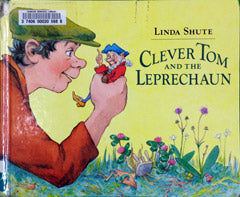 A brief trip to my local library in Springfield, Massachusetts, netted many books sure to put a smile on your student’s face!
A brief trip to my local library in Springfield, Massachusetts, netted many books sure to put a smile on your student’s face!
One such tale is Clever Tom and the Leprechaun. Here is a link to a YouTube video of a reading of the book.
I would begin by reviewing two words in the title: clever and leprechaun. Define clever for the students and discuss how the fox in The Gingerbread Man and Anansi the Spider could be described as clever. You may point out a story that the children have read recently with you that involved a clever character. List some synonyms that could be used for the word clever: sly (fox), cunning (spider) along with quick-witted, cagey, or sharp.
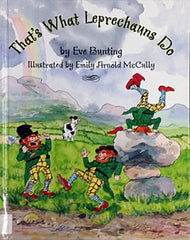 Discuss the word leprechaun. Talk about a leprechaun being a mischievous elf in Irish folktales. An interesting take on this after your discussion would be to read the book, That’s What Leprechauns Do written by Eve Bunting. It describes three leprechauns off to bury their treasure at the end of the rainbow and their antics along the way. It ends with a quote from one of the leprechauns: “Now we’re off to see what new mischief we can find. For besides our important duties, that’s what leprechauns do!”
Discuss the word leprechaun. Talk about a leprechaun being a mischievous elf in Irish folktales. An interesting take on this after your discussion would be to read the book, That’s What Leprechauns Do written by Eve Bunting. It describes three leprechauns off to bury their treasure at the end of the rainbow and their antics along the way. It ends with a quote from one of the leprechauns: “Now we’re off to see what new mischief we can find. For besides our important duties, that’s what leprechauns do!”
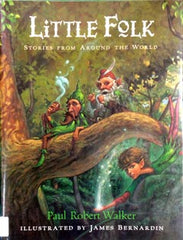 During my trip to the library, I also came across a book, Little Folk, Stories From Around The World written by Paul Robert Walker, that would make a great reference book. It presents information on folktales from around the world with “little folks” as characters. There are eight tales presented, including Rumpelstiltskin and others from countries such as Japan, Denmark, and South Africa.
During my trip to the library, I also came across a book, Little Folk, Stories From Around The World written by Paul Robert Walker, that would make a great reference book. It presents information on folktales from around the world with “little folks” as characters. There are eight tales presented, including Rumpelstiltskin and others from countries such as Japan, Denmark, and South Africa.  The tale from Ireland, The Red-Ribbon Leprechaun, is actually another version of the same tale that Clever Tom and the Leprechaun was based! It would be a wonderful activity to use with the Compare/Contrast Map from our Talk to Write, Write to Learn manual.The children would also enjoy similar tales from other cultures with other pixie characters either from this book or books of your choosing.
The tale from Ireland, The Red-Ribbon Leprechaun, is actually another version of the same tale that Clever Tom and the Leprechaun was based! It would be a wonderful activity to use with the Compare/Contrast Map from our Talk to Write, Write to Learn manual.The children would also enjoy similar tales from other cultures with other pixie characters either from this book or books of your choosing.
As an aside, at the end of Clever Tom and the Leprechaun there are source notes of various topics such as the origin of this folktale and leprechauns that you may find of interest. Other vocabulary words you may want to review before reading would be: piggin (a small pail with a handle), brogue (a leather shoe), boliauns (ragwort, sometimes called ragweed; this is explained in the source notes for your convenience), and garter (an elastic band of material worn around the leg to hold up a stocking, sock).
Read the folktale to the children for enjoyment! This is such a wonderful selection to use the SGM Beginning Perspective Taking Map found in The Story Grammar Marker Teachers’ Manual. Map out each character’s perspective eliciting responses from the children beginning with either Tom or the leprechaun so that it looks similar to the following:
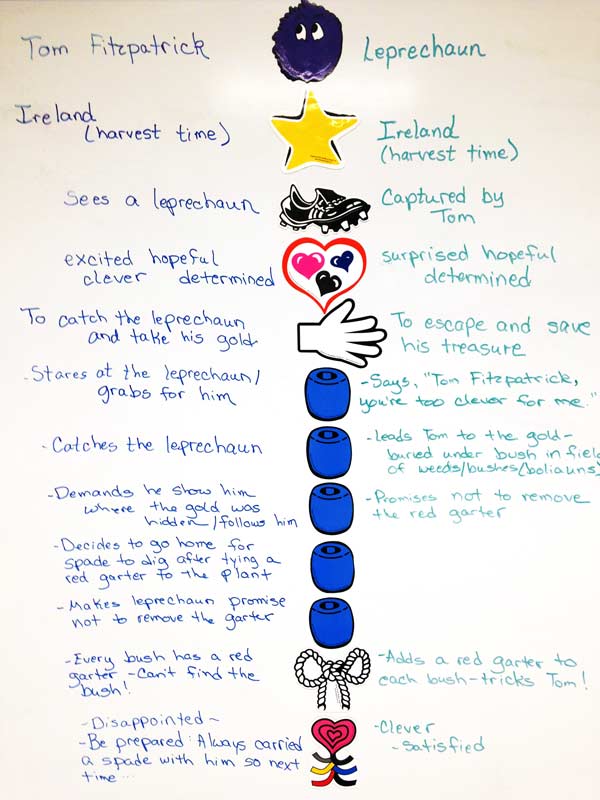
We have found it helpful to go through from the beginning to the end from one character’s perspective, then the other character(s).
Using the scaffold presented, model retelling the story from each character’s perspective and then pair students and ask them to do the same. Be sure to share the last two pages of the book… with the illustration of Tom retelling this tale for many years to come with our little leprechaun friend enjoying listening to it!
Show the Interactive episode stage with the icons… Since this may be presented as an Interactive Episode, discuss how the actions of one character influenced the other and retell the story going back and forth showing the interaction. Discussing this with students using the arrows, as shown below, along with the SGM iconic structure will be a powerful aid to students in understanding this tale and reinforcing perspective and interaction among characters.
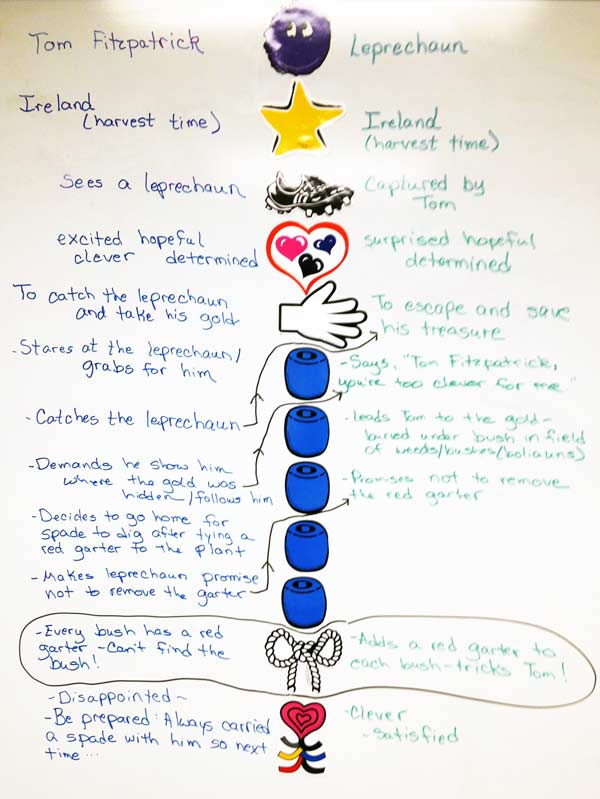
Provide two student markers and the scaffold as shown for a center activity. This turned out to be a wonderful activity to practice oral retellings and pragmatic skills.
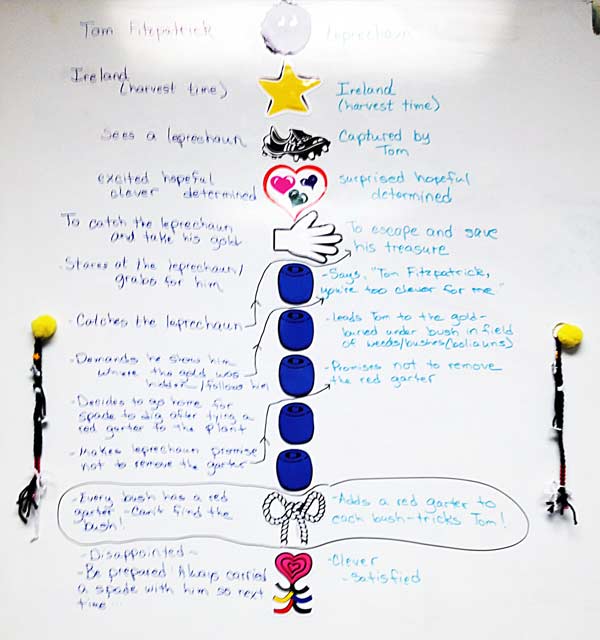
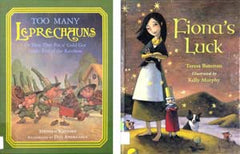 To add a twist to your St. Patrick’s Day tales, two selections that have the leprechaun being tricked are Too Many Leprechauns written by Stephen Krensky and Fiona’s Luck written by Teresa Bateman.
To add a twist to your St. Patrick’s Day tales, two selections that have the leprechaun being tricked are Too Many Leprechauns written by Stephen Krensky and Fiona’s Luck written by Teresa Bateman.
Some of the CCSS that this blog addresses for grades 2 and 3 are:
CCSS.ELA-LITERACY.RL.2.2 — Recount stories, including fables and folktales from diverse cultures, and determine their central message, lesson, or moral.
CCSS.ELA-LITERACY.RL.2.3 — Describe how characters in a story respond to major events and challenges. Acknowledge differences in the points of view of characters, including by speaking in a different voice for each character when reading dialogue aloud.
CCSS.ELA-LITERACY.RL.2.7 — Use information gained from the illustrations and words in a print or digital text to demonstrate understanding of its characters, setting, or plot.
CCSS.ELA-LITERACY.SL.2.4 — Tell a story or recount an experience with appropriate facts and relevant, descriptive details, speaking audibly in coherent sentences.
CCSS.ELA-LITERACY.RL.3.2 — Recount stories, including fables, folktales, and myths from diverse cultures; determine the central message, lesson, or moral and explain how it is conveyed through key details in the text.
CCSS.ELA-LITERACY.RL.3.3 — Describe characters in a story (e.g., their traits, motivations, or feelings) and explain how their actions contribute to the sequence of events.
I hope you and your students enjoy these ideas! Happy St. Patrick’s Day! Sláinte! 
St. Patrick's Day, St Pat
Sheila Zagula
Sheila Zagula works with MindWing Concepts in product development, drawing on her expertise and talents as well as many years of implementing the Story Grammar Marker® and related materials. Her teaching career spans thirty-eight years, most recently as literacy coach in the Westfield Massachusetts Public School System. Sheila has experience as an early childhood educator, a teacher of children with special needs, and a collaborative instructor within an inclusion framework serving children in grades K-5.
Leave a comment.
Comments will be approved before showing up.
